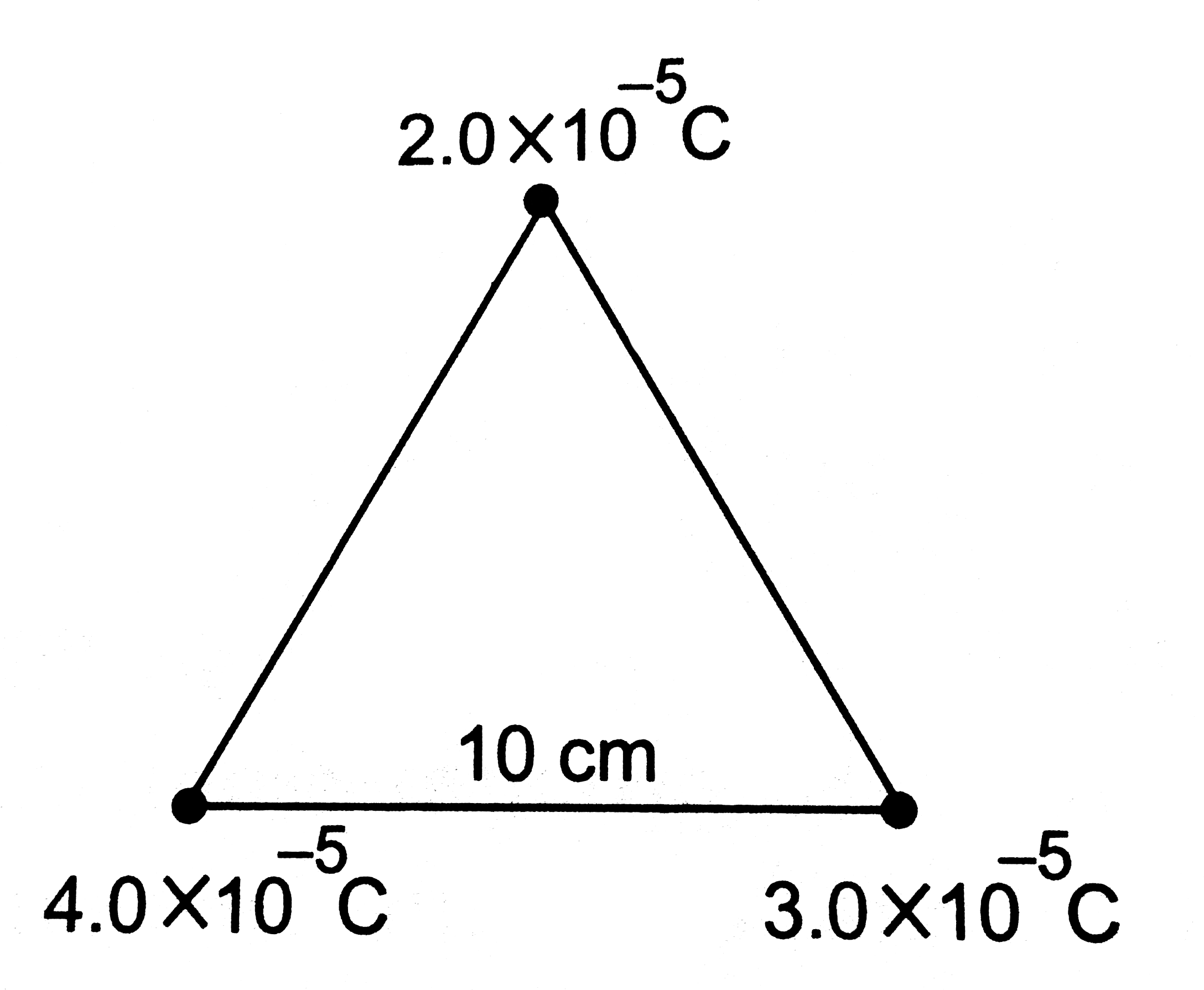Three charged particles are collinear and are in equilibrium, then
all the charged particles have the same polarity
the equilibrium in unstable
all the charged particles cannot have the same polarity
both (a) and (c ) are correct
The correct Answer is:B, C
When three charged particles are collinear and are in equilibrium, then a small displacement of one charged particle from its position will make the system of charges unstable. Thus, the option (b) is true.
Since all charges are in equilibrium, so net force on any of charges in equilibrium is zero. It will be so if two equal and opposite forces act on every charge . It will be so if the three charged particles do not have the same plartity. Thus, option (c) is true.
Topper's Solved these Questions
- BOOK - PRADEEPCHAPTER - ELECTROSTATICSEXERCISE - FILL IN THE BLANKS8videos
ELECTROSTATICS
- BOOK - PRADEEPCHAPTER - ELECTROSTATICSEXERCISE - PROBLEMS FOR PRACTICE8videos
ELECTROSTATICS
- BOOK - PRADEEPCHAPTER - ELECTROSTATICSEXERCISE - VALUE BASED QUESTIONS7videos
ELECTROSTATICS
- BOOK - PRADEEPCHAPTER - ELECTRONIC DEVICESEXERCISE - Fill in the Blanks1videos
ELECTRONIC DEVICES
- BOOK - PRADEEPCHAPTER - MAGNETIC EFFECT OF CURRENT AND MAGNETISMEXERCISE - Competition Focus (Multiple Choice Questions)2videos
MAGNETIC EFFECT OF CURRENT AND MAGNETISM
Similar Questions
Charges are placed at the corners of a square of side a as shown in the following figure. The charged particle placed at A is in equilibrium. The ratio q1q2 is
 View Solution
View SolutionA charges particles particle is kept in equilibrium in the electric field between the plates of millikan oil drop experiment. If the direction of the electric field between the plates is reversed, then calculate acceleration of the charged particle.
View Solution
Knowledge Check
- Question 1 - Select One or More
Three charged particle sare in equilibrium under their electrostatic forces only. Then
Athe particle smust be collinearBall the charges cannot have the same magnitudeCall the charges cannot have the same signDthe equilibrium is unstable - Question 2 - Select One
A charged particle having some mass is resting in equilibrium at a height H above the centre of a uniformly charged non-conducting horizontal ring of radius R. The equilibrium of the particle will be stable .
Afor all values of HBonly if H>R√2Conly if H<R√2Donly if H=R√2 - Question 3 - Select One or More
A charged particle oscillates about its mean equilibrium position with a frerquency of 109Hz. The electromagnetic waves produced.
Awill have frequency of 109HzBwill have frequency of 2×109HzCwill have a wavelength of 0.3mDfall in the region of radio waves.
Analysis of a particle in equilibrium
View SolutionA charged particle of mass m having charge q remains in equilibrium at height d above a fixed charge Q. Now the charged particle is slightly displaced along the line joining the charges, show that it will executes S.H.M. and find the time period of oscillation.
View SolutionHow much work has to be done in assembling three charged particles at the vertices of an equilateral triangle as shown in figure
 View Solution
View SolutionThree charged particle with charge in ratio,1:1:2 and mass in ratio 1:2:4 enters in a region of uniform magnetic field. Calculate the ratio of radii of circular path described by three particles when inetic energy of all three particles is same.
View Solutionthree points charges are placed at the cornors of an equilibrium triangle of side L as shown in the figure
 View Solution
View Solution

